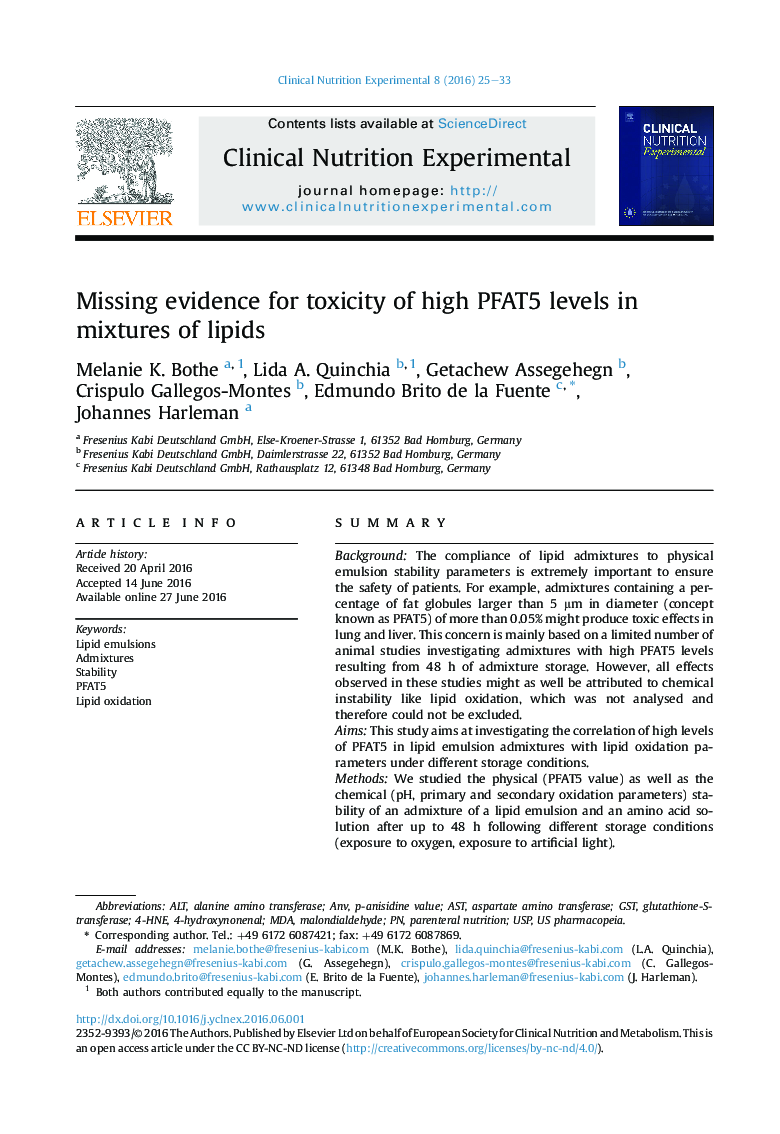| کد مقاله | کد نشریه | سال انتشار | مقاله انگلیسی | نسخه تمام متن |
|---|---|---|---|---|
| 2690414 | 1564742 | 2016 | 9 صفحه PDF | دانلود رایگان |
• Lipid emulsion admixtures show increased levels of fat globules >5 μm when exposed to oxygen.
• Exposure to oxygen and artificial light destabilizes lipid admixtures both physically and chemically.
• The adverse effects are more likely due to chemical, but not physical instability of lipid admixtures.
• Intralipid® 20% admixtures are stable and safe 24 h after preparation.
SummaryBackgroundThe compliance of lipid admixtures to physical emulsion stability parameters is extremely important to ensure the safety of patients. For example, admixtures containing a percentage of fat globules larger than 5 μm in diameter (concept known as PFAT5) of more than 0.05% might produce toxic effects in lung and liver. This concern is mainly based on a limited number of animal studies investigating admixtures with high PFAT5 levels resulting from 48 h of admixture storage. However, all effects observed in these studies might as well be attributed to chemical instability like lipid oxidation, which was not analysed and therefore could not be excluded.AimsThis study aims at investigating the correlation of high levels of PFAT5 in lipid emulsion admixtures with lipid oxidation parameters under different storage conditions.MethodsWe studied the physical (PFAT5 value) as well as the chemical (pH, primary and secondary oxidation parameters) stability of an admixture of a lipid emulsion and an amino acid solution after up to 48 h following different storage conditions (exposure to oxygen, exposure to artificial light).ResultsHigh levels of PFAT5 were only observed after exposure of the admixture to oxygen. Additional exposure to artificial light led to a parallel increase in the primary and secondary oxidation parameters, while the pH was unchanged.ConclusionsThe admixtures investigated in the former animal studies were obviously both physically and chemically unstable and all effects observed in the studies could just as well be caused by chemical instability, namely the administration of lipid peroxides with the admixture.
Journal: Clinical Nutrition Experimental - Volume 8, August 2016, Pages 25–33
